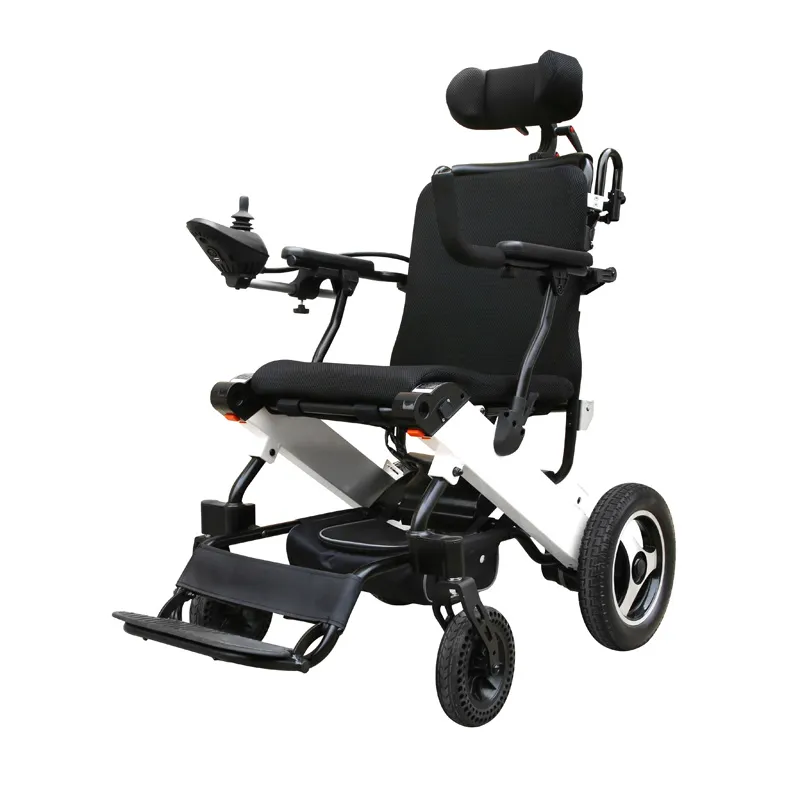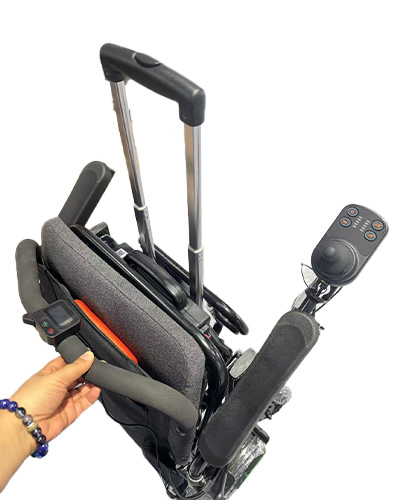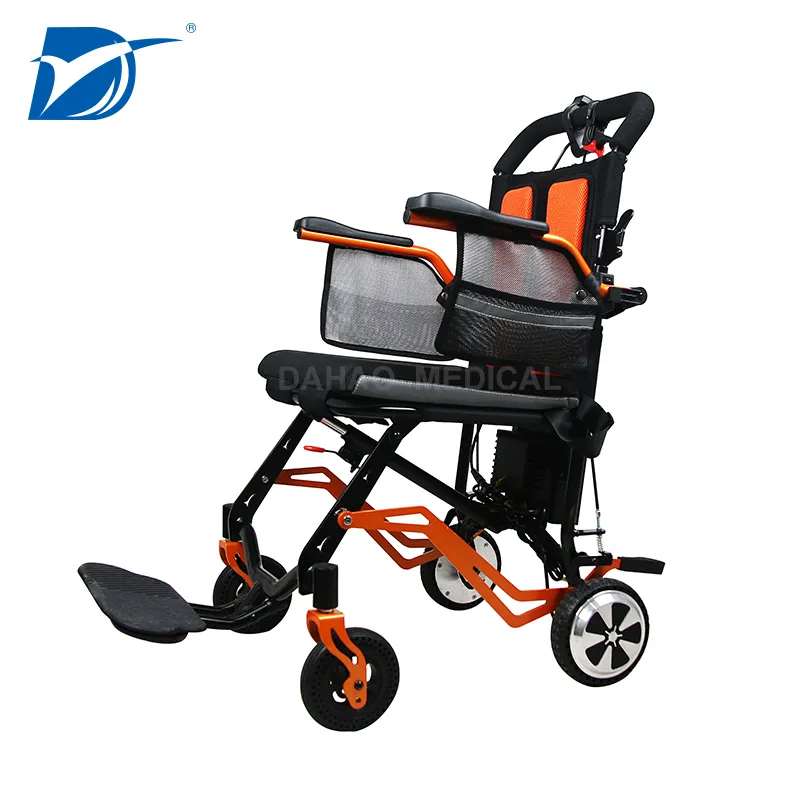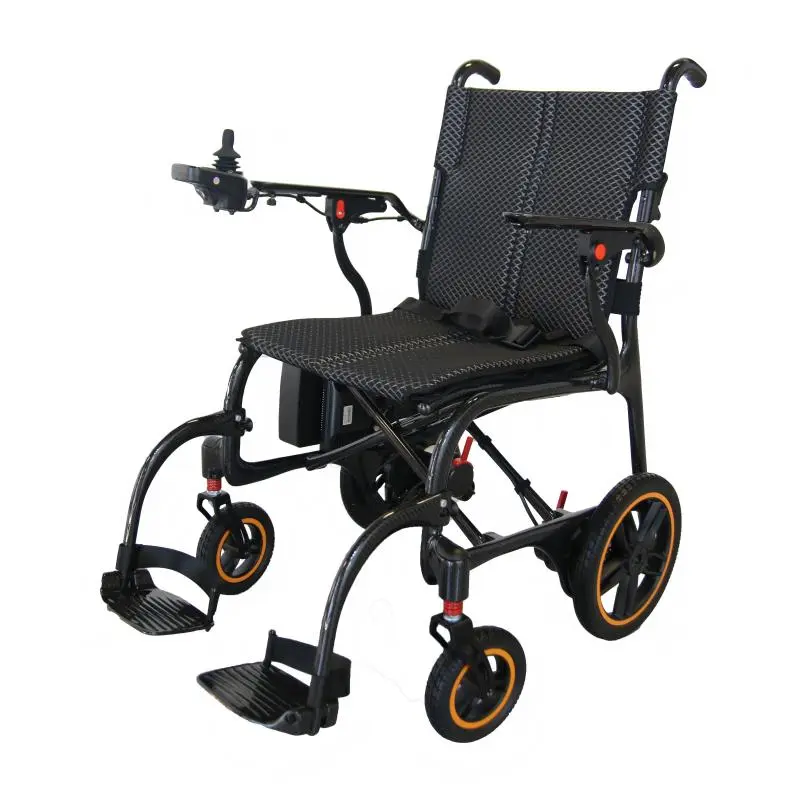Data shows that in 2024, there will be more than 2.8 million electric wheelchair users in the United States alone, and more than 3.2 million in Europe, and the market is showing a rapid growth trend.
However, faced with a wide variety of power wheel chair products on the market with a wide price range and different functions, many consumers - including patients themselves, family members and medical staff - often fall into a dilemma: how should they choose an electric wheelchair?
This is not a simple consumer decision-making issue, but a medical auxiliary equipment matching work related to freedom of movement, quality of life and safety. This article will start from different groups of people and systematically analyze how to choose a power wheel chair to help consumers make scientific, professional and in line with their own needs.

What are the types of electric wheelchairs?
Before formally discussing the segmentation of the population, it is necessary to clarify several basic classifications of electric wheelchairs. According to the dimensions of drive mode, battery type, functional configuration, and electronic control system, electric wheelchairs can be roughly divided into the following categories: basic electric wheelchairs, portable folding electric wheelchairs, mid-to-high-end multifunctional electric wheelchairs, rear-wheel drive/front-wheel drive/mid-wheel drive electric wheelchairs, and standing electric wheelchairs.
1. Basic electric wheelchair
·Suitable for daily travel on flat roads, no need for advanced functions;
·Usually priced at $1,500-$3,000;
·Simple control, medium weight, suitable for mild to moderate users.
2. Portable folding electric wheelchair
·Foldable and lightweight, suitable for frequent travelers;
·Uses lithium batteries, weighs 40-60 pounds (18-28kg);
·Prices range from $2,000-$4,500, with relatively simple functions.
3. Mid-to-high-end multifunctional electric wheelchair
·Equipped with electric tilt, electric lifting, bionic shock absorption, etc.;
·Suitable for users with complex conditions and all-weather users;
·The price is generally $6,000-$15,000, and some customized models can reach $20,000+.
4. Rear-wheel drive/front-wheel drive/mid-wheel drive electric wheelchairs
·Each is suitable for different terrains and operating habits, and the choice needs to be combined with the actual use scenario;
·Mid-wheel drive is flexible and suitable for indoor use, while rear-wheel drive is suitable for outdoor climbing.
5. Standing electric wheelchair
·It can help users "stand" under electric support, improve circulation and prevent pressure sores;
·The price is as high as $15,000-$30,000, suitable for specific rehabilitation populations.
Understanding the above types is the first step in choosing a power wheel chair. Next, we will analyze them in depth according to the user type.
How do different groups choose power wheel chairs?
1. Elderly group: stability and ease of use are the primary considerations
User characteristics:
·Loss of upper and lower limb muscle strength and slow reaction;
·Mostly for medium and low intensity travel needs;
·Possible cognitive impairment or vision loss
Selection suggestions:
· Give priority to rear-wheel drive basic power wheel chairs, which are more stable;
· The control system should be simple and intuitive, such as traditional joysticks, and avoid complex menus;
· Must be equipped with seat belts, anti-tipping wheels and brake systems;
· Battery life of 6-12 hours can meet the needs, avoid being too heavy;
· If you need to travel, a lightweight folding electric wheelchair (such as DAYANG Medical or Pride Go Chair) is recommended.
Recommended price range: $2,000-$4,000

2. Paraplegia, hemiplegia or severe limb disabilities: highly personalized customization is required
User characteristics:
· Long-term dependence on power wheel chairs;
· Poor autonomy of movement and high dependence on functions;
· May be accompanied by spinal deformity and bedsore risks
Selection suggestions:
·Multi-functional electric wheelchairs must be selected, with electric tilt, electric leg lift, and adjustable backrest angle, etc.
·The seat system must use medical-grade anti-pressure sore cushions and waist and back support;
·It is recommended to choose brands with clinical adaptation services (such as Permobil, Quantum Rehab);
·If there is a hand control disorder, consider head control, chin control, and voice control system.
Recommended models: Permobil F5 Corpus, Quantum Edge 3, Invacare TDX SP2
Recommended price range: $10,000-$25,000 (partial reimbursement by medical insurance)
3. Frequent business travelers or tourists: Lightweight and foldable are the top priorities
User characteristics:
·Need to take airplanes, high-speed trains, and cars frequently;
·Need to go up and down stairs or pass through narrow doorways;
·High requirements for lightness and portability
Selection suggestions:
·Prefer portable folding electric wheelchairs, such as DAYANG Medical and WHILL Model F;
·The weight of the vehicle should not exceed 65 pounds (about 30kg);
·The battery should be an aviation-certified lithium battery (such as 288Wh or less);
·The seat structure should be easy to quickly disassemble and clean.
Recommended price range: $2,500-$5,000

4. Patients with neurological diseases (such as ALS, amyotrophic lateral sclerosis, Parkinson's disease)
User characteristics:
·The disease is highly progressive and needs to be gradually adapted to different functions;
·Late-stage speech and hand control may be lost;
·Long-term home or institutional use is required.
Selection suggestions:
·It is recommended to choose a modular and highly expandable power wheel chair from the beginning;
·The control system should support later upgrades to eye trackers, blowing and suction control, infrared recognition control, etc.;
·The integrated design and bed docking function are particularly important for easy transfer;
·Must have remote diagnosis and remote parameter adjustment functions (such as Permobil Connect).
Recommended price range: $15,000-$30,000 (it is recommended to apply for medical fund support)
5. Children or adolescent users
User characteristics:
·Light weight, bone development has not yet been finalized;
·Need to replace components regularly to adjust with growth;
·Prone to safety accidents, need additional protection.
Selection suggestions:
·Choose an electric wheelchair designed for children (such as Zippie, DAYANG Medical);
·The seat must be adjustable in height, width, and footrest length;
·The control system must be learning curve friendly;
·Must be equipped with five-point safety belts, anti-tilt wheels, shock-absorbing tires and other protective measures.
Recommended price range: $3,000-$8,000

Five Aspects: Core Standards for Purchasing Electric Wheelchairs
In addition to population matching, the selection of power wheel chairs also needs to be comprehensively considered from the following five core aspects:
1. Safety
·Is there an anti-dumping design?
·Is the brake reliable?
·Is the material flame retardant and antibacterial?
2. Endurance
·How many kilometers can it travel per charge? (10~25 kilometers is the mainstream)
·Does the battery support fast charging?
·Can the spare battery be replaced?
3. Comfort and ergonomics
·Is there an anti-pressure sore cushion?
·Are the backrest and leg rest electrically adjustable?
·Is the waist and back support good?
4. Control method and degree of intelligence
·Does it support Bluetooth or mobile phone App control?
·Is the control system adapted to special obstacles (such as head control, eye control)?
5. After-sales service and brand reputation
·Does it provide warranty and door-to-door service?
·Can it supply parts and repairs for a long time?
·Is the brand FDA and CE certified?

Detailed List of Electric Wheelchairs for Different Groups of People (Unit: US Dollars)
| Population type | Main characteristics | Recommended electric wheelchair types | Key configuration requirements | Recommended price range | Recommended brands and models examples |
| 1. Elderly people | Decreased muscle strength, slow reaction, mainly used for daily transportation | Basic type / rear-wheel drive / folding type | Simple control interface, safety belt, anti-roll wheel, mechanical brake system, 6-12 hours of battery life | $2,000 - $4,000 | DAYANG Medical, Pride Go Chair |
| 2.Paraplegics/hemiplegics/severely physically disabled people | High dependence, all-day use, need multi-directional support and customization | Multi-functional custom electric wheelchair | Electric tilt/leg lift, lifting system, anti-pressure sore cushion, full back support, head control/chin control and other alternative control systems | $10,000 - $25,000 | Permobil F5 Corpus, Quantum Edge 3 |
| 3. Frequent business/tourists | Frequent flights/high-speed trains, high portability requirements | Folding portable electric wheelchair | Aviation lithium battery, detachable and foldable, lightweight design (<65 pounds), easy loading and unloading structure | $2,500 - $5,000 | DAYANG Medical, WHILL Model F |
| 4. People with neurological diseases | Gradually worsening condition, control methods need to be upgradeable (such as ALS, etc.) | Modular high-expandable type | Support head control/eye control, remote diagnosis and parameter adjustment, electric shifting, bedside docking, electric lifting, multi-point control system | $15,000 - $30,000 | Permobil M3/M5, Quantum iLevel |
| 5. Children/teenagers | Unformed bones, need strong protection, large growth space | Electric wheelchair for children | Adjustable seat structure, anti-roll wheel, shock-absorbing tire, safety five-point belt, growth-type skeleton design | $3,000 - $8,000 | Zippie ZM-310, DAYANG Medical |
Supplementary Explanation: Five Dimensions When Purchasing Electric Wheelchairs
Dimensions | Inspection points |
| 1. Safety | Whether there are anti-tilt wheels, anti-skid systems, safety belts, flame-retardant and antibacterial materials, etc. |
| 2. Endurance | Single-charge endurance (commonly 10-25 kilometers), whether it supports fast charging/backup batteries |
3. Comfort and ergonomics | Whether it is equipped with anti-pressure sore cushions, adjustable backrests, footrests, lumbar supports, etc. |
| 4. Control system | Whether the joystick is sensitive, and whether it supports multiple alternative control methods (such as head control, chin control, voice control, eye control) |
| 5. Brand and after-sales | Whether it has FDA/CE certification, whether it provides quality assurance, whether it has local service providers or remote parameter adjustment support |
"How to choose a power wheel chair?" Behind this question is the desire of countless people for independent life, the pursuit of freedom of movement, and the defense of the dignity of life. Choosing a suitable power wheel chair is not only a tool for physical mobility, but also the first step to rebuild confidence in life.
If conditions permit, it is recommended to contact a professional rehabilitation therapist or assistive device assessor for a one-on-one adaptation assessment before purchasing.
Because for someone who really relies on a power wheel chair to travel, "choosing the right one" itself is a kind of freedom.

Who are you and what medical equipment do you supply?
We are Guangdong Dayang Medical Technology Co., Ltd., a professional manufacturer and supplier established in 2009 in Foshan, China. As a China-based factory, we design, produce, and supply a complete range of high-quality rehabilitation and hospital products, including power wheel chairs, manual and sports wheelchairs, hospital beds, walkers, rollators, commodes, shower chairs, and walking sticks.
We are positioned in the Guangdong & Hong Kong & Macao Greater Bay Area as a trusted manufacturer with an ISO9001, ISO13485, FDA, TUV certification, and CE & approved products.










